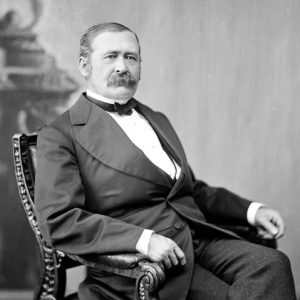calsfoundation@cals.org
Second Arkansas Infantry (US)
The Second Arkansas Infantry Regiment served in the Federal army during the Civil War. Comprised of white Unionists, the unit served almost exclusively within Arkansas.
Efforts were made to organize units of white Unionists in the state with the arrival of Federal forces in 1862. The Second Arkansas began recruitment in September 1863 in Springfield, Missouri. The unit recruited Unionists who fled Arkansas, as well as pro-Union men who remained in the northwestern corner of the state. Recruiting for the regiment was slow, and when the organized companies met in Fort Smith (Sebastian County) in January 1864, only four companies were able to meet the minimum number of men required. Even before these units moved to Fort Smith, the regiment saw action against guerrillas near Clarksville (Johnson County). On December 16, 1863, the unit lost its first soldier to enemy action.
The organization of the unit was completed on March 13, 1864, but the unit had only around 600 men rather than the 1,000 of a full-strength regiment. Organized into ten companies, the unit was commanded by Major Marshall Stephenson.
Stationed at Clarksville, eight companies of the regiment marched out of the town on March 24 to join the Frontier Division under the command of Brigadier General John Thayer. Two companies remained at Clarksville to guard against guerrillas. Thayer and the rest of the division had begun their march on March 20 as part of what would become the Camden Expedition. As part of the First Brigade under the command of Colonel John Edwards, the Second Arkansas served alongside the First Arkansas, the Eighteenth Iowa, and the Second Indiana Battery. The division missed its planned meeting with a force under the command of Major General Frederick Steele at Arkadelphia (Clark County). The two Union armies finally met on April 9 near the Little Missouri River.
The Second Arkansas saw action at Prairie D’Ane from April 10 until April 13, with the regiment losing one man killed. Running low on rations, Steele moved his army east to the fortified city of Camden. Opposing Confederate forces under the command of Major General Sterling Price followed the Federals, attacking the column at Moscow (Nevada County). The entire brigade successfully defended the rear of the army from these attacks, suffering a total of seven killed and twenty-four wounded; one soldier from the regiment was killed. The Union army began arriving at Camden on April 15, and Thayer’s division moved into the city late the next afternoon.
The Second Arkansas did not see any action while in Camden, but the Eighteenth Iowa and one section of the Second Indiana Battery from the First Brigade did participate in the Engagement at Poison Spring. After defeats at both Poison Spring and Marks’ Mills, the Union army began to retreat toward Little Rock (Pulaski County). Steele was pursued by Confederate forces who caught the army as it struggled to cross the rain-swollen Saline River. During the Engagement at Jenkins’ Ferry, the Second Arkansas lost one killed, three missing, and an undetermined number of wounded, including Stephenson.
The regiment arrived in Little Rock with the rest of the army on May 3. The regiment suffered heavy losses from sickness and desertion during the campaign, and the two companies stationed at Clarksville joined the unit in Little Rock. The unit was officially mustered into the army, and Stephenson was promoted to colonel in July 1864.
Serving in the Little Rock area with some service in Lewisburg (Conway County), the Second Arkansas escorted a wagon train to Fort Smith on October 18, where it rejoined a brigade under John Edwards, who had received a promotion to brigadier general. On December 31, 1864, the regiment was transferred to Clarksville, where it was tasked with evacuating Unionist families from the area before a planned abandonment of Fort Smith. This evacuation was later canceled, but the Second Arkansas remained at Clarksville for the remainder of the war. Many of the men who deserted during the Camden Expedition returned to the unit during its service at Clarksville. During its service in western Arkansas, the regiment fought several small skirmishes against guerrillas, losing several men.
The regiment mustered out on August 8, 1865. The unit lost twenty-six men killed in action or who died from wounds and 139 from sickness.
For additional information:
Forsyth, Michael. The Camden Expedition of 1864 and the Opportunity Lost by the Confederacy to Change the Civil War. Jefferson, NC: McFarland, 2008.
Report of the Adjutant General of Arkansas: Period of the Late Rebellion, and to November 1, 1866. Washington: Government Printing Office, 1867.
David Sesser
Henderson State University
 Civil War through Reconstruction, 1861 through 1874
Civil War through Reconstruction, 1861 through 1874 Military
Military ACWSC Logo
ACWSC Logo  John Thayer
John Thayer 



Comments
No comments on this entry yet.